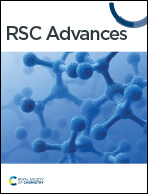The discrepancy of NH3 oxidation mechanism between SAPO-34 and Cu/SAPO-34
Abstract
The difference of NH3 oxidation mechanism over SAPO-34 and Cu–SAPO-34 was studied. XRD (X-ray diffraction), SEM (scanning electron microscopy) and H2-TPR (H2-temperature programmed desorption) were conducted to estimate the Cu species distribution. The quantity of individual Cu2+ ions escalated with the elevation of silicon content in the Cu/SAPO-34 catalysts, leading to an enhancement in the activity of the NH3-SCR (ammonia-selective catalytic reduction) process. This augmentation in activity can be attributed to the increased presence of isolated Cu2+ species, which are pivotal in facilitating the catalytic reaction. In addition, the kinetic test of NH3 oxidation indicated that the CuO species were the active sites for NH3 oxidation. Specifically, the strong structural Brønsted acid sites were the NH3 oxidation active sites over the SAPO-34 support, and the NH3 reacted with the O2 on the Brønsted acid sites to produce the NO mainly. While the NH3 oxidation mechanism over Cu/SAPO-34 consisted of two steps: firstly, NH3 reacted with O2 on CuO sites or residual Brønsted acid sites to form NO as the product; subsequently, the generated NO was reduced by NH3 into N2 on isolated Cu2+ sites. Simultaneously, the isolated Cu2+ sites might demonstrate a significant function in the NH3 oxidation process to form N2. The identification of active sites and corresponding mechanism could deepen the understanding of excellent performance of NH3-SCR over the Cu/SAPO-34 catalyst at high temperature.



 Please wait while we load your content...
Please wait while we load your content...